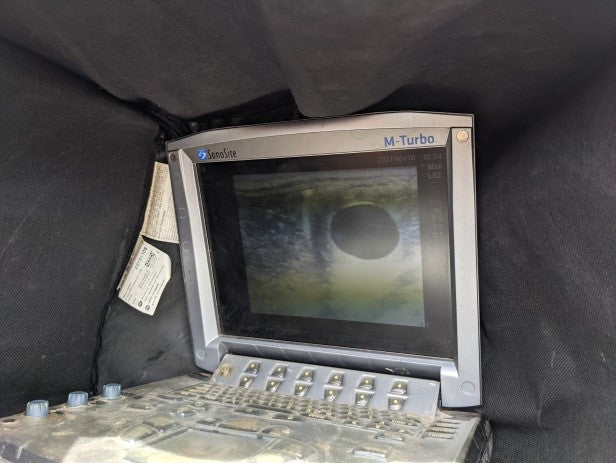If you are considering putting your mare in foal we'll cover the basic steps below. If your mare is already pregnant, then you'll probably know most of this information and are now embarking on the 11 month waiting game.
There are 3 basic methods for getting your mare in foal:
- Live cover. Here you take your mare to the stallion owner or maybe you have your own stallion. Paddock serving or hand serving of the mare is done directly by the stallion.
- Artificial insemination - fresh. This process is normally handled by a veterinarian or AI technician. You choose the stallion you would like to use and take the mare to the vet. The vet will determine when the mare will ovulate and orders the semen accordingly. The trick is to get the semen and the mare at the same place at the same time. It can be tricky if the semen gets lost in the mail! Fresh semen generally has a better chance of getting the mare pregnant than frozen.
- Artificial insemination - frozen. Again, you choose the stallion you would like to use and take the mare to the vet. The frozen semen can be shipped at any time and stored for long periods of time. There is much less rush with this process as the semen will often be ready and waiting by the time the mare arrives. As soon as the mare shows signs of ovulating the semen in thawed and then deposited deep in the horn. Not all semen freezes and thaws well, resulting in a worse pregnancy rate compared to fresh semen. Due to the extra skill required with this procedure, it is usually more expensive to perform.
Once the sperm enters the female reproductive tract it undergoes a process called capacitation. Capacitation is very important. It's a chemical reaction with the sperm that allows it to bind to, and penetrate the egg. If this process doesn't take place there will be no fertilisation.
All things going well, the egg and sperm are now in the same place at the same time and the egg has been successfully fertilised.
Now you wait...
- It takes the fertilised egg around 6 days to descend from the fallopian tube to the uterus.
- Once in the uterus the embryo needs to "bounce" around. The embryo literally needs to move around in the uterus, touching as many parts as possible. This process tell the uterus "hey I am an embryo, don't flush me out!". If this process doesn't happen the embryo can be lost.
- The embryo is mobile until around day 16 post ovulation.
- Usually around day 14-16 the mare will be scanned by the vet. This first scan has several purposes: the vet will check that there is an embryo present; the vet needs to make sure that there is ONLY 1 embryo present, and the overall health of the embryo and mare can be assessed. If more than one embryo is found, it's much easier to pinch it while the embryos are still mobile.
Pinching is the process of popping one embryo - usually the smaller one. This is necessary because having twins is almost always fatal for both embryos/foals.
While all this is happening, the follicle (from which the egg ovulated) collapses into a body known as the corpus luteum (commonly called a CL by veterinarians). The CL produces the progesterone required to maintain the pregnancy until the placenta is big enough to produce the sustaining hormones itself.
Around day 17, if the embryo is healthy, the embryo will attach itself to the uterus and you have a new baby on the way and due in another 323 days!
Image of a positive 14 day scan provided by Pretty Lopin Ranch. https://www.facebook.com/PrettyLopinRanch

